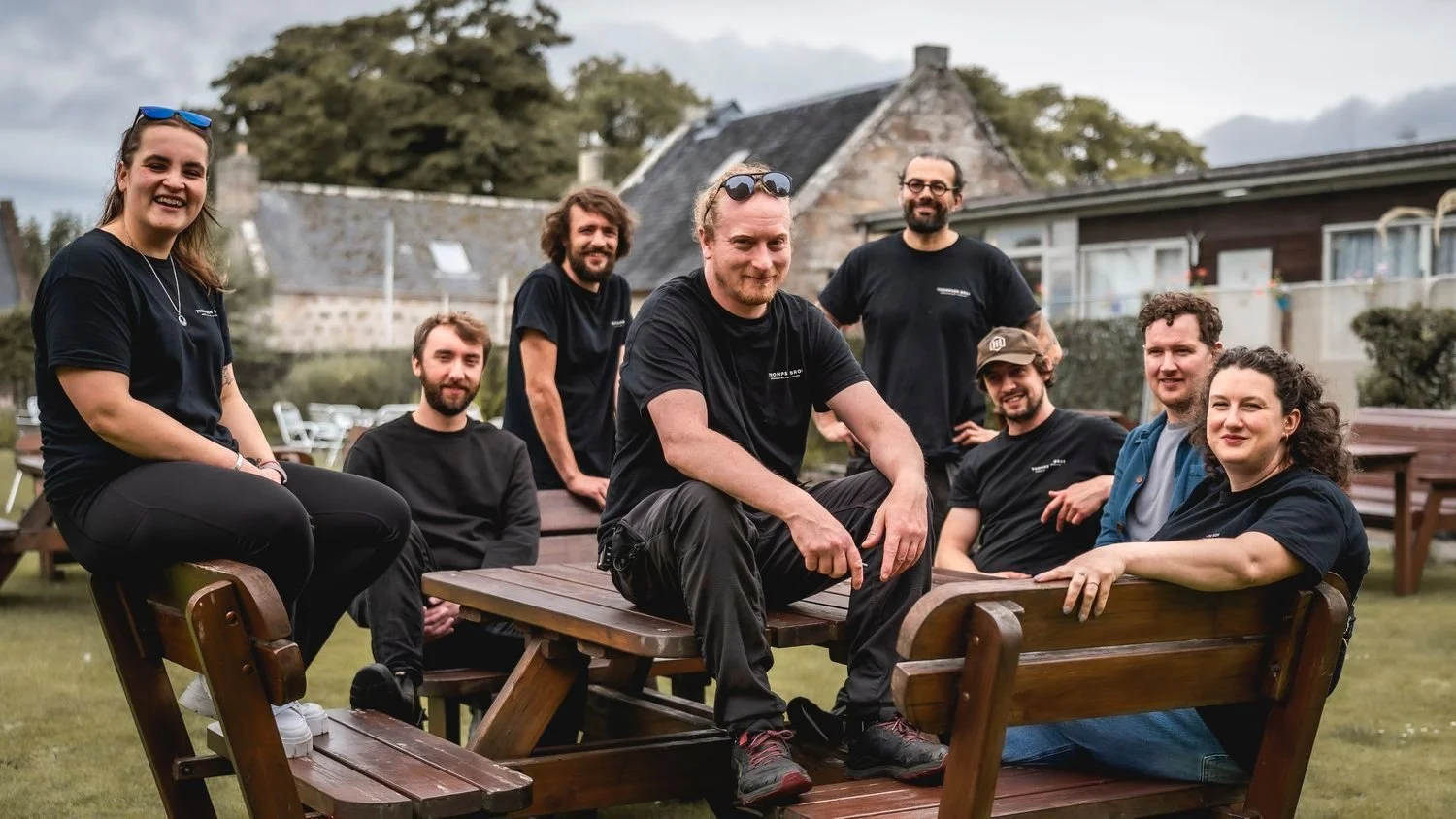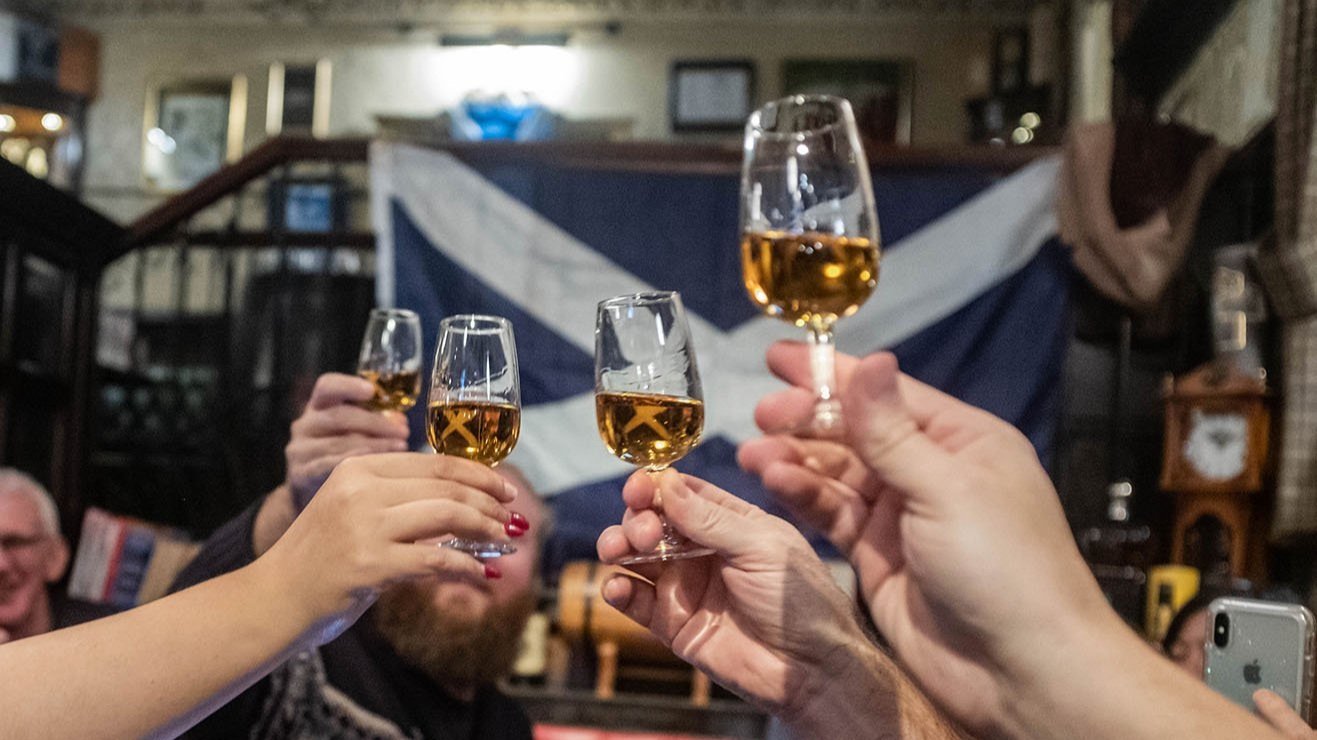Springbank 13yo Local Barley
2024 Release | 54.1% ABV
Score: 9/10
Exceptional.
TL;DR
Made by people
We’d like to know how
Sometimes there are long, dram-powered conversations, often into the small hours, about why Springbank makes the whisky it does. It matters not if you’re one of the many who place it head-and-shoulders above all else in the Dramface Top 40, or one of those who feel it’s perhaps a touch hyped, no one can deny it’s utterly compelling. It is certainly different. Unique even.
Often, we decide it’s because it’s basically made in a working museum and all the antiquated steps involved in its production are what gives it that something oh-so-unique. Other times we’ll wonder why it’s the only spirit made with its odd (and tricky to explain - as I’ve never taken it in) partial-triple distillation that somehow arrives at a figure of around 2.5 times distilled.
Later, we’ll decide it’s the maturation location, with of all its spirit being taken care of on site in either its ancient warehouses or some of the newer, purpose-built structures that have been erected far more recently. It matters not; they’re all racked and within a minute’s walk of each other.
Perhaps it's the people; maybe precious secrets are handed over, nugget by crucial nugget, from one skilled hand to the next, ensuring that it remains as consistent as it can, from malting, to mashing, to distilling, to maturation, to blending. However, I was lucky enough to attend the Springbank School once upon a time, and I’m pretty certain I know what the difference is. So let me assume more than a pinch of Dunning-Kruger (not for the first time) and hypothesise for a paragraph or two.
In order to try to determine what makes their liquid so uniquely dense and flavourful, we need to probably look for something that is unique to the place. There are many things, but I believe that one is more prominent than all others.
An extended tour is enough for you to realise something about Springbank. It’s not necessary for you to actually work there to realise the place has a lot of people around. In recent times, it’s even more obvious as they all wear high-vis vests and buzz around the place like happy and welcoming whisky bees. Since everything is highly labour intensive, this makes sense; they need a lot of hands. But it’s not only a necessity, it’s a philosophy.
You see, this is true to belligerent levels of conformity. At every step of the process many a production or workflow-centred thinker would notice ways to make something much easier; much more efficient and simpler for the hands on deck, making their daily grind a little lighter. But, they choose not to follow these, occasionally obvious, ‘improvement’ suggestions; this is true whether it requires investment or not.
Modify that malt hopper to spend less time coaxing the malt onto the belt? Great idea! Then each team member wouldn’t need to arrive at work that day with their favoured (often home-fashioned) ‘coaxer’. Be it a bent stick with a ball of tape on the end, a broom handle or a rubber mallet. I mean why not just make the hopper and feeder more fit for purpose?
Or how about that huge iron steep tank up on the second malt floor? Sure, the sides need to be tall to hold all of that barley and water, but that makes it pretty difficult to shovel all of that heavy, water-laden grain up-over-and-out onto the floor for distribution. Wouldn’t it be easy to fashion a gate, or a drop-sided mechanism to lower things and hugely diminish the workload for the fatigued malting team? I think it would. But they’re unlikely to implement it.
Because this philosophy I mention is one that is not focused in any way on making everything as efficient as possible, they are focused on making the best they can, the way they know how and, all the while, employing as many of the local community as they possibly can in doing so, with no mind towards pandering to shareholders.
To replace fickle, temperamental or problematic equipment in most cases would eventually mean less people are needed. So they don’t. They just don’t. Changes at Springbank are very rare indeed. You get the sense that any changes they do put in place are agonised over to the nth degree, and only ever executed when they are reassured it maintains the philosophy and there’s simply no alternative and reasonable option.
So, to my hypothesis.
Of the week you spend at Springbank as part of their, simply terrific, school week, you will spend almost half of it handling barley. Actually, if you delete the sensational times your ‘classes’ will revolve around deliriously happy warehouse tastings and glee-filled blending sessions, it’s much more than half. Yes, you will spend time mashing, in the fermentation room adding yeast, understanding (or at least trying to) the set up of the stills, cask-filling and racking and even bottling in their on-site bottling hall, maybe even a little touring around the town for history and context too. But your most vivid memory will likely be something revolving around malting grain.
It is an intensely labour-heavy pursuit. Every hour you spend in the maltings; steeping, spreading, turning, clearing or setting the kiln (you get so sticky while you’re in there you’d swear they’d set the fire already) will feel like a day's worth of anything else you’ll do. You’ll know you have worked.
Now, you may get lucky. If you’re malting Hazelburn (unpeated) that’s a little more straightforward. Springbank is harder but fine too, heavily-peated Longrow, however, can be more challenging. Then, the big pain in everyone’s back is the local barley grain. I didn’t see or touch it while I was there, but everyone, to a voice, had a tale about how much they hate handling it. The smaller grains are far more dense and difficult to handle, at every stage, they’re glad it’s only an annual thing. For now at least.
At some point you find yourself catching your breath, probably lying prostrate on a bed of barley, and you have the sudden realisation that you can only enjoy this experience in this one, unique spot; in all of Scotland. Only at Springbank.
I don’t in any way want to diminish the effort at the other distilleries with working malt-floors: Kilchoman, Laphroaig, Bowmore, Balvenie, Benriach and Highland Park - soon to be joined by Glen Garioch and (we hear and hope!) Ardnamurchan, but none of them are required for all of their production, in most cases only a small percentage with part-time malt-floor operations. Everything Springbank does, including Glengyle, is fed from their own malt floors with very, very little exception.
More discussions in recent months regarding this topic has unlocked much more understanding for me as to how this process so profoundly affects flavour. I’ve tried to find an easy-to-digest overview article, but struggled. While our Tyree is busy with studies, this might offer some insight. It would seem there is very deliberate, flavour-based reasoning behind Glen Garioch investing so much in reinstating their own malt floor.
Of course, maltsters offer (expensive) floor malt to those who specify it, but it seems to me that however a distillery executes its own process and settles with a system that works, that will potentially be the thing that defines so much of the character and flavour of the spirit.
Without doubt, if other producers began implementing the same across the land, we’d see a hike in price attributed to its cost. The costs would be significant; in implementation and also running them, yet once more Springbank remain the torchbearers. Their 10 year old is £55, their Kilkerran 16yo is less than £70. The prices close to you may vary, but when they’re hiked, know it’s down to distribution and retail and the distillery doesn’t see a cent of that bunce on top.
Local Barley is much higher. The releases reflect this; it’s expensive regardless of the age statement each year it seems, because - as touched upon - the cost is in the difficult production and the diligent separation. Not that it matters most of the time, being whisky’s annual bright yellow unicorn.
However, this year I actually caught one. And oh my goodness.
Review
Springbank 13yo, Local Barley, 2024 Edition, Belgravia Barley, Glencraigs Farm, June 2010 Distillation, 54.1% ABV
£100 paid at the distillery
A friend called from Campbeltown offering to pick one of these up for me. I couldn’t believe my luck. I transferred the money so fast he had it before our call ended. So long has it been since I owned a Local Barley that I opened it straight away. Huge mistake, it’s the hardest thing to reach past on the shelves. It’s bloody lovely.
Score: 9/10
Exceptional.
TL;DR
Made by people
Nose
Dried mangoes, nectarines, cookie dough and melted vanilla ice cream. Umami; wet ropes, oyster shells and beach pebbles. Malty grains, a little hayloft and dust, lemon sherbert, ginger, cream soda, cooked plums.
Later; white chocolates; a freshly opened box, and a sweet honey-glazed barbecue. I need to stop nosing as the list seems endless. Not before I find banana custard and ripe melon.
Later still; I found a little smoke. It was left in an uncovered glass for half an hour or so, and the warmest, softest puff of barbecue and dry grassfire was there, but harder to find after I’d sipped it again.
Palate
Take the nose, it’s all there, but the chocolatiness is amplified through a gorgeous oily, viscous, creamy mouthfeel that takes you through the mineralic spectrum before creamy fruits and cheesecake give way to light ginger, nutmeg, white pepper and salt.
No single cask note dominates and while there’s vanilla it’s a beautiful, rich and moreish custard and cream note rather than sickly. It is sweet, but everything else balances so bloody well. It’s both rich and bright.
We’re unlikely to ever experience something as together as this through a single cask. Every glass has something new to offer. We could be here all day.
Another sip and I’m reminded of its almost hidden savoury lick… I pour another… I have all day.
three weeks later; slow down Wally
The Dregs
Thus far I’ve managed to not dwell on the fact that so many would love this bottle and me raving about it as much as this is only going to exacerbate that. So what’s the point?
Well, I’ve had a few Local Barleys over the years and genuinely loved them all, however, this one is different. There’s a poise, balance and richness here that has perhaps come about from its age, but certainly a lovely mix of perfect casks.
Truth be told, if you’re of the means to grab one of these you probably need to know that it’s a bloody good one because it’s not likely to be cheap. But also, I hope that some of the team at Springbank who put all that bloody effort into humphing, shifting, shovelling and lifting all that bloody barley can realise it’s so, so worth it. Sometimes praise isn’t levied to stoke demand, sometimes it’s needed just to say thank you.
Throughout all the notes I’ve shared there’s a defined, obvious and definite thread of Springbank DNA throughout the entire experience. It’s so visceral, you don’t just nose it and taste it - you feel it.
Maybe it’s because I was there, maybe it’s because I got to witness and share in the work, the effort, the stubborn dedication. But I think, even if you don't ever step foot inside Springbank, you’d also sip this whisky and know it’s something special.
Why not a 10? Well, I flirted with the idea, but I’m a coward because honestly it’s hard for me to find a reason not to.
Perhaps, at a stretch, there's something I’d be looking for in a 10/10 that could only come with more time, more age. I’m not sure. What I know is that it’s the best I’ve had since the 16 year old way back, and what I hypothesise is that it’s down to shirking efficiency in favour of so much human endeavour - but also quite possibly a malt floor.
Score: 9/10
Tried this? Share your thoughts in the comments below. WMc
-
Dramface is free.
Its fierce independence and community-focused content is funded by that same community. We don’t do ads, sponsorships or paid-for content. If you like what we do you can support us by becoming a Dramface member for the price of a magazine.
However, if you’ve found a particular article valuable, you also have the option to make a direct donation to the writer, here: buy me a dram - you’d make their day. Thank you.
For more on Dramface and our funding read our about page here.



















































